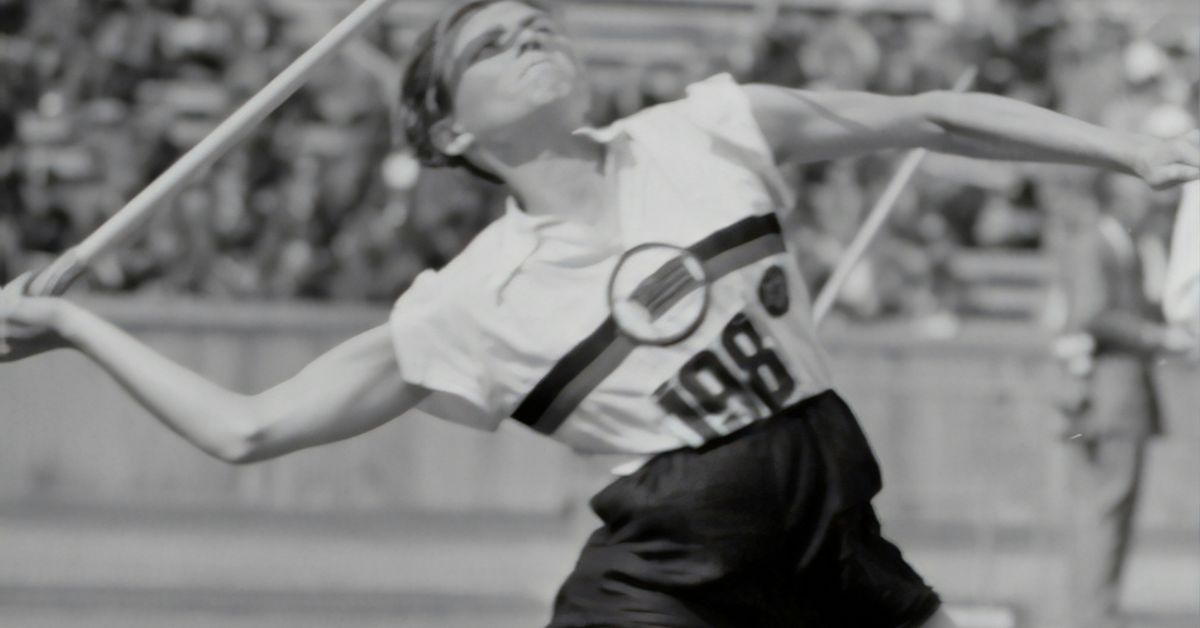Elevate Your Game with These Transformative Fitness Routines
When it comes to athletic performance, the gap between good and great is often bridged by the dedication to a well-structured fitness routine. Think about it: we’ve all seen those players who seem to glide effortlessly across the field or court, while others struggle to keep pace. What separates these two types of athletes? While natural talent plays a role, it’s often the result of rigorous training and fitness regimens that truly elevate their game. So, grab your water bottle, and let’s dive into some transformative fitness routines that could redefine your performance.
The Power of Strength Training
Strength training isn’t just for bodybuilders or powerlifters. It’s a crucial component for athletes of all types. I remember the first time I stepped into a weight room—nervous, unsure, and surrounded by muscle-bound giants. But I quickly learned that strength training doesn’t just build muscles; it enhances overall athleticism. Here’s why you should incorporate it into your routine:
- Injury Prevention: A strong body can better withstand the rigors of sport. By strengthening muscles, tendons, and ligaments, you reduce the risk of injury. It’s like putting on armor before entering battle!
- Improved Power: Whether you’re sprinting down the track or jumping for a rebound, strength translates directly into power. You want to be the player who can leap higher and sprint faster than your opponent.
- Enhanced Endurance: Contrary to popular belief, strength training can also improve your stamina. It allows your body to perform at higher levels for extended periods.
Incorporating compound movements like squats, deadlifts, and bench presses can help you build functional strength. Aim for two to three sessions per week, focusing on different muscle groups to allow for recovery. And, if you’re like me and can’t resist a bit of competition, consider joining a local lifting club. Not only will you gain strength, but you might also make some friends along the way!
Cardio Conditioning: More Than Just Running
Let’s face it: the traditional image of cardio usually involves a treadmill and a lot of sweat. But if you want to elevate your game, it’s time to think outside the box. Cardio conditioning doesn’t have to be monotonous. In fact, it can be downright enjoyable if you mix it up. Here are a few fresh ideas:
- Circuit Training: This involves performing a series of exercises in sequence with minimal rest. It’s a great way to keep your heart rate up while building strength. I once tried a circuit that included everything from kettlebell swings to burpees—and let me tell you, I was gasping for air, but it felt amazing!
- Interval Training: Alternating short bursts of intense activity with periods of rest can boost your metabolism and improve cardiovascular fitness. Think of it as a rollercoaster ride for your heart!
- Sports-Specific Drills: Whatever your sport, practice drills that mimic game scenarios. This not only improves your fitness but also sharpens your skills.
Find something that excites you. Whether it’s a dance class, a cycling group, or even a game of ultimate frisbee, the important thing is to keep your heart pumping and your body moving.
Flexibility and Mobility: Unlocking Your Potential
As a young athlete, I used to overlook flexibility. I thought it was just for yogis or dancers. But I quickly learned that flexibility and mobility are vital to performance and injury prevention. Tight muscles can limit your range of motion, which, in turn, can hinder your athletic abilities. Here’s how to effectively integrate flexibility and mobility into your routine:
- Dynamic Stretching: Before workouts, engage in dynamic stretches to warm up your muscles. Think arm circles, leg swings, and torso twists. These movements prepare your body for the activity ahead.
- Static Stretching: After workouts, dedicate time to static stretching. This involves holding a stretch for 15-30 seconds. It’s like giving your muscles a well-deserved hug after a rigorous workout.
- Yoga or Pilates: Both practices improve flexibility while incorporating strength and balance. And if you’re feeling adventurous, try a hot yoga class—it’s more challenging than it sounds!
Investing time in flexibility not only enhances your performance but also promotes recovery, allowing you to bounce back faster after tough sessions. I can’t tell you how many times I’ve avoided soreness simply by sticking to my stretching routine!
Nutrition: Fueling Your Fitness Journey
Now let’s talk about something we all love—food! But eating right can often feel like a mystery. What should you eat before a game? How do you recover post-workout? Here’s the scoop on nutrition that can elevate your game:
- Pre-Workout Fuel: Aim for a meal rich in carbohydrates and protein about 1-3 hours before your training. Think whole-grain toast with peanut butter or a smoothie packed with fruits and yogurt. It’s like filling your tank before a road trip!
- Hydration: Never underestimate the power of hydration. Dehydration can sap your performance faster than you can say “sweaty socks.” Drink water throughout the day, and consider electrolyte drinks during prolonged activities.
- Post-Workout Recovery: After exercising, replenish your body with protein and carbs. A classic choice is a protein shake with a banana. It’s a delicious way to help your muscles recover.
Many athletes swear by meal prepping to ensure they’re always fueled up and ready to go. I’ve attempted it once or twice, but I often end up eating straight from the fridge like a raccoon. (No judgment, please!)
The Mental Game: Conditioning Your Mind
While physical fitness is crucial, let’s not forget the mental aspect of sports. The mind can be your greatest ally or your worst enemy. Having a strong mental game can elevate your performance to levels you didn’t think possible. Here’s how to cultivate mental toughness:
- Visualization: Many elite athletes use visualization techniques to prepare for competitions. Picture yourself executing a perfect jump shot or crossing the finish line ahead of your rivals. It’s like a mental dress rehearsal for the big day!
- Mindfulness and Meditation: Practicing mindfulness can help you stay focused during competitions and reduce anxiety. It’s like giving your brain a spa day.
- Goal Setting: Set realistic, achievable goals for yourself. Write them down, and track your progress. Celebrate small victories along the way—because every step counts!
When I first started incorporating mental training into my routine, I was amazed at how much it affected my performance. It’s not just about physical prowess; your mind holds immense power over your body.
Rest and Recovery: The Unsung Heroes
In the hustle and bustle of training, it’s easy to overlook rest and recovery. But trust me, neglecting this aspect can lead to burnout or injuries. Recovery isn’t just an afterthought; it’s a vital part of any fitness routine. Here’s how to prioritize recovery:
- Quality Sleep: Aim for 7-9 hours of sleep each night. This is when your body does most of its repair work. I’ve found that when I skimp on sleep, my performance takes a nosedive.
- Active Recovery: On rest days, engage in low-intensity activities like walking or cycling. This keeps the blood flowing without putting too much strain on your body.
- Massage and Foam Rolling: Treat your muscles with a massage or spend some time foam rolling. It’s like giving your body a mini vacation!
Remember, every athlete needs rest days—don’t be afraid to take them! Embrace them as an essential part of your training rather than a sign of weakness.
Embrace Technology: Tracking Your Progress
In this digital age, technology offers incredible tools to help athletes track their progress and enhance their routines. From wearable fitness trackers to specialized apps, the options are endless. Here are a few ways you can leverage technology:
- Fitness Trackers: Devices like Fitbits or smartwatches can monitor your heart rate, steps, and even sleep quality. They serve as a constant reminder to keep moving!
- Mobile Apps: There are countless apps designed for everything from workout tracking to meal planning. I’ve dabbled with a few, and while some are more user-friendly than others, they can be quite helpful.
- Online Coaching: If you’re looking for personalized guidance, consider hiring a coach who offers virtual training. It’s like having a personal cheerleader right in your pocket.
Just remember, while technology can enhance your performance, it’s essential not to become overly reliant on it. Sometimes, the best workouts happen when you put your device down and just enjoy the moment.
Creating a Sustainable Routine
As we wrap up this fitness journey, let’s talk about sustainability. Starting a new fitness routine is exciting, but maintaining it over the long haul is where the real challenge lies. Here are some tips to create a routine that sticks:
- Find What You Love: You’re much more likely to stick with activities that you genuinely enjoy. Experiment with different routines until you find what makes your heart sing.
- Stay Flexible: Life is busy, and sometimes your ideal workout plan may need to change. Allow yourself the freedom to adapt your routine as needed.
- Track Your Progress: Keeping a journal of your workouts can help you see how far you’ve come. Celebrate the small wins—no matter how minor they may seem!
Remember that fitness is a journey, not a destination. There will be ups and downs, but the key is to stay committed and enjoy the ride. Whether you’re training for a competition or just looking to improve your health, these transformative fitness routines can set you on the right path. So lace up those sneakers, grab your gear, and let’s elevate your game!
Final Thoughts
As you embark on this journey, keep in mind that everyone’s fitness path is unique. What works wonders for one athlete may not resonate with another. The important thing is to stay curious, be willing to experiment, and listen to your body. It struck me that the most successful athletes are often those who embrace the process, celebrating not only their victories but also their setbacks. Here’s to achieving new heights in your athletic endeavors!




